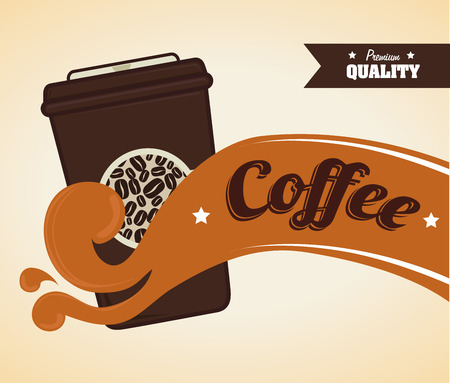Pre-Brexit Coffee Trade: Setting the Scene
Prior to Brexit, the United Kingdom’s coffee trade operated within a highly integrated European framework. As a member of the European Union, the UK benefited from frictionless trade with EU countries, enjoying streamlined customs procedures and tariff-free access to a wide array of goods—including green coffee beans and roasted products sourced from across the continent. The established supply chains connecting UK importers with major European ports such as Rotterdam and Hamburg enabled efficient distribution and consistent product quality for local roasteries and cafés. This seamless movement of goods was crucial for the burgeoning speciality coffee scene in cities like London, Manchester, and Edinburgh, where café offerings increasingly reflected diverse origins and advanced roasting techniques sourced through trusted continental partners. The pre-Brexit landscape fostered collaboration between UK businesses and their European counterparts, facilitating innovation in café menus and supporting the country’s rapid embrace of third-wave coffee culture. In essence, the UK’s position within the EU created a robust foundation for both commercial scale operations and artisan roasters alike, underpinning the nation’s dynamic coffee sector prior to any regulatory disruption.
2. Regulatory Shifts Post-Brexit
Following the United Kingdom’s exit from the European Union, the regulatory landscape for coffee imports has been fundamentally reshaped. The transition marked a move away from the unified EU customs framework towards independent UK protocols, introducing new layers of complexity to the coffee supply chain. Businesses now face an expanded array of documentation, additional border checks, and a modified tariff regime—each significantly impacting both importers and café operators across the country.
New Customs Protocols
One of the most notable changes post-Brexit has been the introduction of bespoke UK customs procedures for goods arriving from both EU and non-EU origins. Previously, coffee imported from EU member states entered with minimal bureaucratic friction; now, every shipment requires detailed declarations, safety and security filings, and compliance with new sanitary and phytosanitary standards. This has extended lead times and increased operational costs for roasters and distributors alike.
Tariffs and Duties
The UK Global Tariff (UKGT) replaced the EU Common External Tariff on 1 January 2021. While green coffee beans generally remain tariff-free to support domestic roasting businesses, certain processed coffee products are now subject to specific duties. This change impacts pricing structures throughout the supply chain and can influence café menu offerings as import costs fluctuate.
| Coffee Product Type | Pre-Brexit Tariff (EU) | Post-Brexit Tariff (UKGT) |
|---|---|---|
| Green Coffee Beans | 0% | 0% |
| Roasted Coffee Beans | 7.5% | 7.5% |
| Instant Coffee | 9% | 8% |
Paperwork and Administrative Burdens
The necessity for comprehensive paperwork has become a defining feature of post-Brexit coffee imports. Importers must now compile commercial invoices, certificates of origin, bill of lading documents, and potentially proof of conformity with UK food safety regulations. For small-scale cafés or micro-roasteries without dedicated compliance teams, these requirements can be especially onerous—sometimes resulting in delays or even missed shipments.
Implications for UK Café Offerings
This evolving regulatory environment means that sourcing specialty lots or limited-edition coffees from overseas is more challenging than ever before. Increased import times may affect freshness, while higher administrative costs can trickle down to consumers through price adjustments on café menus. As a result, some cafés are re-evaluating their supply strategies—opting to build closer relationships with UK-based importers or focus on origins with more predictable customs processes.

3. Impact on Coffee Sourcing and Supply Chains
In the wake of Brexit, the UK’s coffee import landscape has undergone significant transformation, particularly in relation to how beans are sourced and distributed throughout the country. Historically, many UK importers relied on seamless trade routes via EU member states—especially major European coffee ports such as Hamburg and Antwerp—for both raw and roasted coffee. The new post-Brexit trade agreements have introduced customs checks, tariffs, and increased paperwork, fundamentally altering these established relationships. Importers now face longer lead times and greater unpredictability in shipments, often resulting in higher costs that ripple through the entire supply chain.
The logistical hurdles imposed by the new border arrangements have also forced UK businesses to rethink their sourcing strategies. Some roasters and café operators have sought to establish more direct relationships with origin countries in Latin America, Africa, or Asia, bypassing traditional European intermediaries. While this can offer opportunities for closer ties with producers and potentially fresher beans, it also demands greater investment in compliance, logistics coordination, and quality assurance.
Additionally, the complexities of navigating disparate regulations between the UK and EU have led to a shift in supplier dynamics. Smaller specialty coffee importers—who often lack the resources of larger corporations—are especially vulnerable to these disruptions. Many have reported consolidating shipments or partnering with other local businesses to mitigate increased shipping costs and administrative burdens. Overall, Brexit’s impact on sourcing has introduced a layer of uncertainty that requires adaptability from every link in the UK coffee supply chain.
4. Pricing and Variety on the High Street
The aftermath of Brexit has brought about tangible changes to the pricing structures and variety of coffee available across UK high streets. Increased import costs, driven by new tariffs, customs checks, and currency fluctuations, have directly impacted the bottom line for both chain and independent cafés. These added expenses are often passed on to consumers, resulting in noticeably higher prices for a cup of coffee or a bag of specialty beans. The table below illustrates some of the core factors affecting coffee pricing post-Brexit:
| Factor | Pre-Brexit Impact | Post-Brexit Impact |
|---|---|---|
| Import Tariffs | Minimal/None (EU trade agreements) | Increased costs due to new tariffs |
| Customs Delays | Smooth transit within EU | Longer lead times and potential spoilage |
| Currency Fluctuations | Stable exchange rates with Eurozone suppliers | Pound volatility impacting purchase costs |
As a result, café owners face tough decisions regarding their offerings. Many independent shops have reduced the range of single-origin beans and unique blends on their menus, focusing instead on more readily available or cost-effective options. This contraction in variety means that customers may notice fewer exotic choices, with staples like Colombian or Brazilian coffees becoming more dominant while rarer African or Asian origins become scarce.
The impact is particularly pronounced among smaller roasters and specialty cafés, who traditionally rely on direct relationships with producers and niche imports. Supply chain disruptions can lead to intermittent shortages or inconsistent bean quality—issues that are less prevalent in larger chains due to their purchasing power but are acutely felt by independents striving for differentiation. For UK consumers, this means that enjoying a truly diverse cup profile now often comes at a premium, both in terms of price and accessibility.
5. Winning Strategies from UK Coffee Businesses
In the wake of Brexit, UK coffee roasters and cafés have demonstrated remarkable agility in navigating the evolving landscape of coffee imports and consumer expectations. Many have established direct trade relationships with coffee producers, effectively bypassing traditional European intermediaries. This approach not only streamlines supply chains but also fosters greater transparency and traceability—factors increasingly valued by British consumers. By dealing directly with farmers, UK businesses can secure higher-quality green beans, negotiate fairer prices, and cultivate long-term partnerships that benefit both parties.
Some cafés have responded to post-Brexit complexities by diversifying their offerings and reimagining their menus. With certain European pastries or specialty ingredients becoming less accessible or more costly, inventive operators have turned towards locally sourced baked goods and British-inspired treats. This pivot not only reduces reliance on imports but also resonates with the growing ‘support local’ sentiment among UK patrons. Seasonal menu rotations now often feature British twists on classic coffee accompaniments, from scones with clotted cream to oat biscuits paired with single-origin espresso.
The focus on British-roasted beans has also intensified. Roasteries across the UK are investing in state-of-the-art equipment and refining their profiles to highlight the unique characteristics of each origin—be it a fruity Ethiopian natural or a chocolatey Colombian washed. By emphasising quality roasting techniques and providing transparency about sourcing, these businesses are strengthening their brand identity in an increasingly competitive market. Some have even launched educational initiatives for customers, such as cupping sessions and brew guides, to foster appreciation for freshly roasted beans and deepen engagement with the craft.
This combination of direct trade, menu innovation, and dedication to British-roasted coffees showcases how UK coffee businesses are not merely surviving but thriving amidst Brexit-induced challenges. Their strategies offer a blueprint for resilience: build strong supplier relationships, champion local flavour, and invest in technical expertise. As the industry continues to adapt, these approaches ensure that the UKs café scene remains vibrant, distinctive, and ever-evolving.
6. Shifting Consumer Habits and Perceptions
Since Brexit, the landscape of coffee consumption in the UK has undergone a marked transformation, mirroring broader changes in British consumer attitudes. As supply chains have become more complex and the provenance of imported goods more scrutinised, UK coffee drinkers are increasingly attentive to where their coffee comes from and how it is produced. This heightened focus on traceability is not merely a by-product of policy shifts, but a reflection of growing consumer desire for transparency throughout the value chain. Cafés across Britain have responded by showcasing detailed sourcing information, often highlighting direct trade relationships or single-origin beans—an approach that resonates with an audience keen to understand both the journey and the ethics behind their daily brew.
Moreover, sustainability has emerged as a decisive factor influencing purchasing decisions. With Brexit ushering in regulatory divergence from EU standards, many British consumers now expect cafés and roasteries to adopt clear environmental commitments, such as reducing packaging waste, supporting regenerative farming practices, or participating in carbon offset schemes. These expectations have encouraged local operators to innovate not only in their coffee offerings but also in their operational practices. The result is a marketplace where values-driven choices are just as important as flavour notes or roast profiles.
This evolution in consumer habits underscores a broader shift in cultural identity post-Brexit: a desire for products that reflect both quality and conscience. In practice, this means that cafés able to demonstrate rigorous traceability and sustainability credentials are better positioned to earn customer loyalty. Ultimately, the Brexit-induced recalibration of coffee imports has catalysed a new era for UK coffee culture—one defined by discerning tastes, ethical awareness, and an enduring commitment to transparency at every stage of the supply chain.

